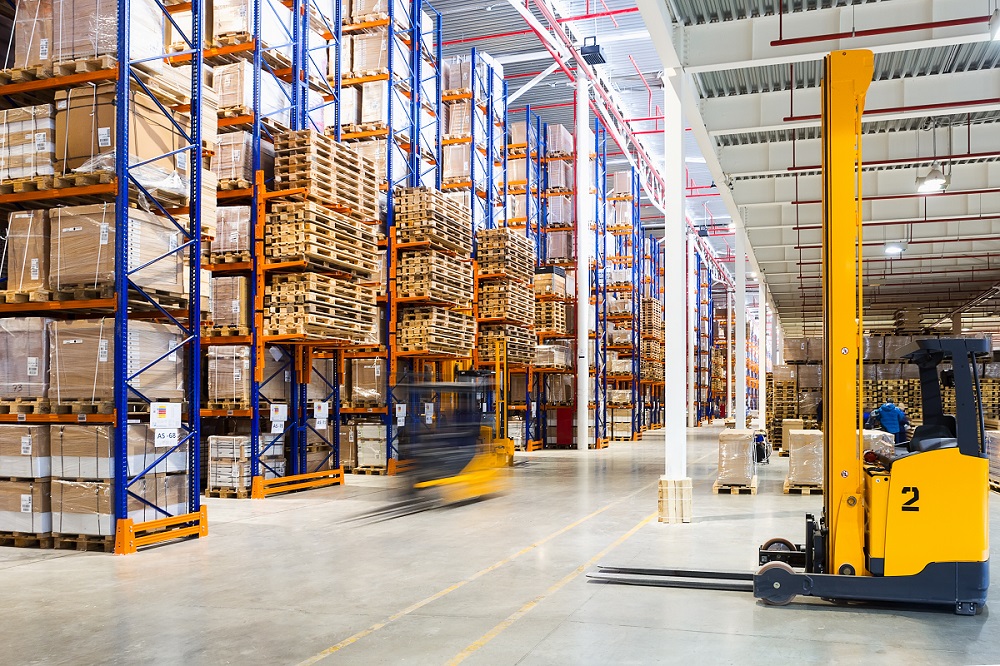Home / Racking and Shelving Insights / Warehouse Shelving: Common Pallet Racking Mistakes to Avoid

When it comes to warehouse storage solutions, pallet racks are considered the most efficient and effective option. Utilised by companies throughout the world, these structures are found in fulfilment companies, commercial operations, retail outlets and manufacturing facilities.
Chances are the pallet racks that you see have been carefully designed and chosen to meet the specific requirements of that facility. However, in some cases, the process of purchasing storage solutions is rushed and the wrong system ends up being installed. There are also times when the right system was installed, but proper training has not been given to employees on how to use the system, resulting in unnecessary equipment damage.
Here’s a list of common mistakes to avoid when purchasing and using a pallet racking system.
Warehouses and fulfilment centres are incredibly busy places. To save time, some employees climb the pallet racks to assemble items or pick orders. It may be convenient for a picker to climb up the pallets and retrieve a box or product but this is putting convenience before safety and this is noted in Safework Australia. The racks aren’t designed for climbing and the pallet systems can have protruding nails, fractured stringers or broken planks. These hazards can puncture a hand looking for a hold or give way under a person’s weight.
Pallet racking systems have specific weight limits and loading capacities. When you want to ensure your workers’ safety, knowing your pallet racks’ capacities before loading them is critical. For instance, if your pallet rack wasn’t designed to hold heavy items, a collapse is inevitable if you overload it.
Ensure that your pallet racks can hold your load, specifically in the upper levels. If you don’t see weight capacities posted on your racks, check the manufacturer’s specs. It’s also best to store the heaviest loads on the lower levels or on the floor. If you have items of different weights, store the lightest ones on the higher bays and the heavier ones on the lower levels.
Commercial pallet racking systems are subject to all types of abuse in the warehouse: collisions with heavy forklifts, overloading, misloading and many others. For this reason, even the strongest and most durable racks need cautious handling, guarding equipment and maintenance to prolong their service life.
Preventing and reducing pallet rack damage includes training forklift drivers on proper loading procedures, reducing forklift speeds, making sure the aisles are wide enough, keeping the warehouse clutter-free, conducting regular rack inspections and ensuring that the beam clips are engaged.
You should also take into consideration the environment of your facility. For instance, seismic zones have a different set of standards. Pallet racks that are installed outdoors are also exposed to inclement weather conditions that can reduce the racks’ capacity ratings. In addition, racks installed on non-level or inadequate floors can be compromised.
Many companies fail to take into account the height-to-depth ratio. The ratio should be 6:1 or lower, representing the ratio of the distance between the uppermost beam level and the facility’s floor, divided by the frame’s depth. It is often necessary to use overhead rack ties, special base plates and anchors to achieve optimum stability.
Used racking systems are considerably more affordable than new systems. They are also fairly easy to source as many warehouses and distribution centres sell their used pallet racking when they upgrade with new systems. That being said, it’s a common mistake to purchase used racking on impulse.
A used racking may look good on the surface, but it may also have a lot of underlying problems. Over time, those issues can cause high repair costs, wiping out the initial savings you had with a second-hand racking. If you do decide that second-hand racking is an option, make sure to inspect the used racking pallet thoroughly before purchase. Here at Shelving Shop Group, we always advise buying new, quality racking systems for your peace of mind.
With new pallet racking, you can shop around to find the system that’s compatible with your warehouse requirements, reliable and strong, so you won’t need to worry about additional repair costs in the near future.
Many storage facility managers or warehouse owners only buy what they need now, without considering how they will expand in the future. They end up having to buy a brand new system every few years.
It’s better to plan accurately and consider your business’ later growth. You might buy a system you won’t get to maximise in the long term, but it’s still a good buy if it means you won’t have to use temporary storage facilities which may be expensive and disrupt the smooth flow of your operations. However, when buying a pallet racking system, it’s generally more cost effective to think about how it will suit your business, not just now, but in the future as well.
Of course, make sure you’re sourcing pallet racking systems from a reputable company. This way, you can be confident that these systems will still be around when your business requires additional storage.
When it comes to commercial and industrial storage, pallet racks are the optimal solutions. They’re the most efficient way of storing pallet loads. But you need to have a solid purchase, maintenance and repair plan to ensure your pallet racks serve you for a long time. And with an excellent choice of system and proper employee training, you can avoid the common pallet racking problems that could lead to significant loss.
If you want to know more about the racking system suitable for your warehouse operations, don’t hesitate to get in touch with us. Our team will guide you and ensure you get the best value for your money.